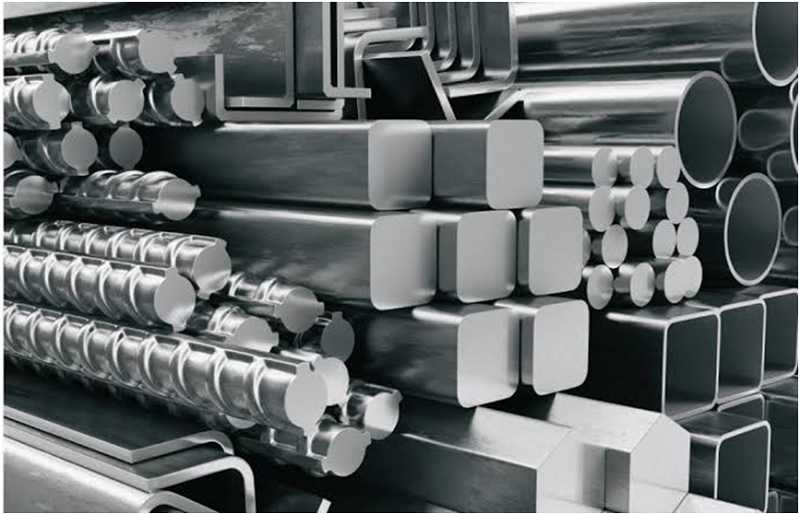Five Factors To Consider When Choosing Stainless Steel Grades

Stainless steel refers to a group of iron-based alloys containing a minimum of 10.5% chromium. The presence of chromium in the alloy ascribes to it the valuable corrosion resistance property. The chromium forms a passive layer on the steel that enables it to prevent rust and other forms of corrosion. Besides chromium, it also contains a maximum of 1.2% carbon. Stainless steel may also contain other elements in varying amounts such as nickel, silicon, molybdenum, nitrogen, and others. Based on the presence of different kinds of elements, it manipulates the properties of stainless steel.
Stainless steel comes in a variety of shapes, it is available as plate, sheet, tube, pipe, bar, tread plate, and expanded metal. Stainless steel is available in various grades, and every grade falls under one of the five families, austenitic, ferritic, martensitic, duplex, and precipitation hardening. Austenitic steels are non-magnetic stainless steels containing high chromium and nickel levels and low carbon levels. 304 stainless steel and 316 stainless steels are two of the most commonly used stainless steel grades and they belong to the austenitic family. You can buy 321 stainless steel tube which belongs to the titanium stabilized austenitic stainless-steel family if you are looking for improved resistance to intergranular corrosion.
Choosing the right stainless-steel type for your manufacturing application is a complex task. Because of the availability of various grades, selecting the right alloy that adequately meets your need can be difficult. Here are a few important factors that you should consider.
Level of Corrosion Resistance
Stainless steel is widely used across various industries because of its corrosion resistance properties. But stainless steel grades are not equally resistant to corrosion. Because of the presence of high chromium and nickel levels in austenitic stainless steel, it offers the highest level of corrosion resistance. Martensitic stainless-steel and ferritic stainless-steel are suitable options for applications that do not require a high degree of corrosion resistance. It contains a lesser amount of nickel and chromium and is much more affordable while displaying similar or higher hardness. Duplex stainless steel consists of a two-phase microstructure made from ferritic and austenitic stainless steel. Its corrosion resistance level is similar to austenitic stainless steel and is dependent on the presence of varying levels of chromium and molybdenum. The presence of the ferritic phase in its micro-structure makes duplex steel less susceptible to stress corrosion cracking in chloride or humid environment as compared to austenitic steel.
Consider Operating Environment
One of the major considerations while choosing the right stainless steel is its operating environment. The stainless steel must be carefully optimized for use in operating conditions to ensure its longevity and durability. Various factors like temperature, low pH, stressors, and crevice corrosion can bear a negative impact on stainless steel. Hence, before selecting the right stainless steel family and grade, carefully evaluate the given industrial operating conditions, and customize your product accordingly so that it displays the best strength, toughness, and corrosion resistance across the specified temperature range.
Is Stainless Steel to Be Welded or Formed?
The welding capability of stainless steel is dependent on its grade. Some grades are not suitable for welding because they are susceptible to hot cracking and stress corrosion cracking. The martensitic stainless steel family is not suitable for welding because of its high carbon content. Austenitic stainless steel grades have a lower carbon content due to which it displays better weldability and formability properties. You can also weld or form the right grade of ferritic stainless steel, such as Grade 430 and 407. Most ferritic steel grades have poor heat-affected zone toughness, which can make them susceptible to cracking if welding is carried out at the wrong temperature range.
Strength, Ductility, And Toughness of Stainless Steel
You need to consider the strength, ductility, and toughness threshold of stainless-steel grades to make the right choice. Strength refers to the stress amount you apply to the stainless steel before it starts to deform. Ductility refers to the ability of stainless steel to change shape without losing its strength. Toughness is the stainless steel’s ability to deform without undergoing any fracture. Because of high carbon levels, martensitic stainless steels have very high strength. Precipitation hardened stainless steel grades also show good strength. Duplex steel grades because of its two-phase microstructure display great strength, ductility, and toughness.
Consider The Magnetic Response
The alloy composition of stainless steel will define its magnetic properties. All austenitic stainless steels are paramagnetic (nonmagnetic) in the fully austenitic condition, and the lack of magnetism is also known as relative magnetic permeability. The presence of chromium in ferritic structures renders it magnetic. Martensitic stainless steel, like ferritic, possesses magnetism. It enables magnetic detection of contamination and is typically used in food processing machinery. Based on the magnetic response you require, you can choose the right grade of stainless steel.
To Conclude:
These are a few important factors you should consider to choose the right stainless-steel grade. It will enable you to appropriately meet the requirements of the application, and ensure the longevity and sustainability of stainless steel.